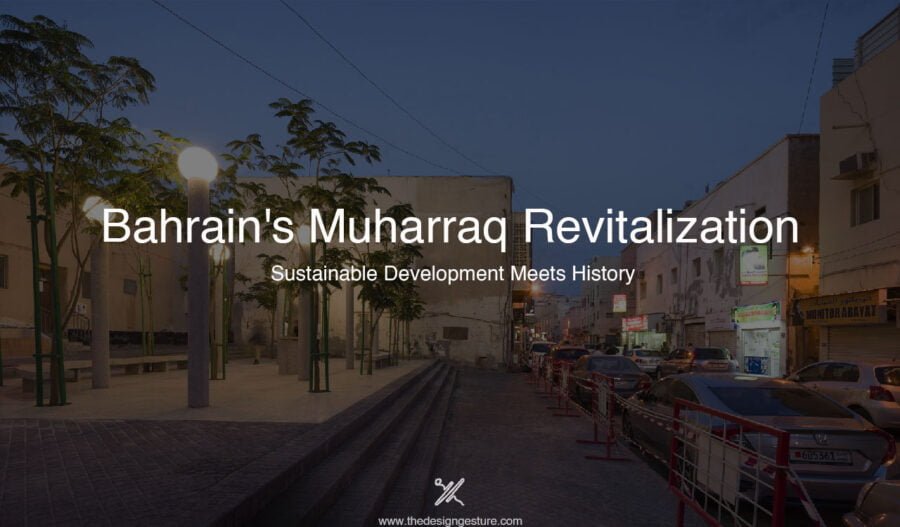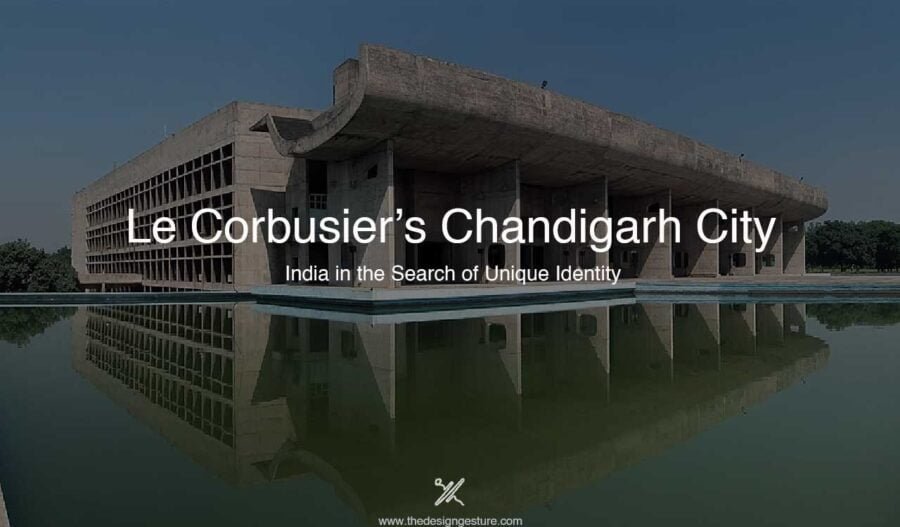Table of Contents
Introduction
The Revitalization of Muharraq project involves the rehabilitation of the historic areas of Muharraq city, rooted in its former pearling trade located in the Kingdom of Bahrain. From an innocent initial intervention in the early 21st century by Sheikha Mai Al Khalifa to restore a cultural majlis in one of her family properties in Muharraq, the project took a complex shape with a holistic approach. The project evolved with a higher aim of not just preserving the historic structures related to pearling, but also instilling the lost communal spirit by constructing new cultural buildings and public squares encouraging a local influx in the city.
The Decline and the Rebirth of Muharraq, Bahrain
Muharraq once flourished not only as the formal capital of the Kingdom of Bahrain but also as a global center for natural pearls, strengthening the economy of the country. However, the development of cultured pearls in the 1930s accompanied by a simultaneous discovery of oil in Bahrain, led to the decline of the pearling economy, and the capital was shifted to Manama from Muharraq. Gradually, the native families migrated from Muharraq, and the houses of Muharraq were rented to the expatriate workforce, mostly individuals.
The rebirth of Muharraq or precisely the rebirth of communal spirit in Muharraq was founded on the beliefs, tenacity, and ever-growing interventions of Sheikha Mai Al Khalifa which started in the early 2000s. Sheikha Mai intended to reinstate the cultural life in Muharraq which had declined significantly since the decline of the pearling industry, by restoring a majlis in her grandfather’s old house into Sheikh Ebrahim Al Khalifa Centre for Culture and Research.
Since the inauguration of this Centre in 2002, Sheikha Mai has initiated several programs contributing to the revitalization project, seeking support from banks, local businesses, and public-private partnerships. The center was the initial step towards a noble direction founded on her firm belief that the reintroduction of cultural life into the abandoned areas of Muharraq, along with an integrated program of restoration and rehabilitation, could reverse its fate.
Dissecting the project
The project involves the conservation and restoration of scattered natural and man-made structures related to the pearling trade, all knit together along the remarkable trail, “Pearling Path” telling the story of pearling, from the last remaining beach of Muharraq towards the inland. From the sea, the project includes three protected oyster beds, a preserved Bu Mahir fort, and a newly constructed visitor center on the seashore.
Moving towards the inland, a newly constructed pedestrian bridge connects the reclaimed area to old Muharraq where a series of traditional buildings, precisely sixteen historic buildings related to pearling trade from divers’ homes, and merchants’ large courtyard houses to amarats underwent rehabilitation and restoration.
Amarat is a local name for a warehouse usually located on the coast, but as of now, it is pushed inland due to reclamation. In addition to preservation, some of the old dilapidated structures were demolished and the plots of land were developed into new landscaped public spaces and a few other new cultural architectural buildings including the Archaeologies of Green Pavilion, the House of Architectural Heritage, the Pearling Path Visitor and Experience Centre, and the Dar Al Muharraq Centre for Traditional Music was built along the trail to revive the cultural spirit of Muharraq and awaken the memory of Muharraq among the natives.
Restoration of Historic Buildings
Bu Mahir fort and the seashore are of immense importance as they played a significant role in the communal and cultural lives of the residents of old Muharraq the seashore had witnessed farewells and reunions of pearl divers and also served as a playground for youngsters, a site of folkloric beliefs and rituals, a place for playing folk music, and an open-air majlis where traditional food was served. Unfortunately due to naval attacks on Bahrain, only a part of the fort remains intact. Restoration of the fort commenced in the 1970s, but only some of it was rebuilt. Again in 2010, the site was excavated to reveal its original foundations and dimensions.
Some of the properties which were restored are still owned by the old pearl diving families. Since these buildings were dilapidated, Sheikha Mai sought a partnership with the owners and arranged for their restoration with the monetary support of other local institutions.
A wide range of buildings including diver’s dwellings locally known as Al Ghus House, the majlis of the boat captain locally known as Nukhidhah House, Badr Ghulum House which served as both a home and a clinic then, Al Alawi House which is trader’s house, Al Jalahmah house, Murad house, Fakhro house and Siyadi complex which consists of Siyadi house, Siyadi majilis, and Siyadi mosque that belongs to the Siyadi family, were among those subjected to restoration and rehabilitation.
The restoration of these buildings included tasks like reinstating lost wind towers for passive ventilation and measures were taken to carefully choose materials that resemble old materials. So, coral stone from demolished structures, and wood were reused in the restoration work in addition to the extensive use of terrazzo in the project, as it was a widely used material in Bahrain in the 1940s.
New Intervention: Green landscaped areas along the trail
As discussed above, the vacant plots that appeared due to demolition were conceived as green landscaped public squares. There are 18 such squares along the trail and the main idea behind developing them into squares instead of rebuilding, them is to address the needs of residents living in a contemporary city like Muharraq which lacks green open spaces and playgrounds for children.
In an attempt to respect the pearling history of Bahrain, these squares were further adorned with spherical white street lamp posts, symbolic of pearls. The spherical lamp posts subtly intend to facilitate wayfinding while illuminating the streets of Muharraq. To a certain extent, these squares tend to resemble the old Bu Mahir seashore which once served as a playground and open-air majilis.
New Intervention: Contemporary Cultural Buildings
New buildings make bold contemporary architectural statements while still respecting the pearling history of the region. The primary purpose of these new interventions is to reinstate the lost communal spirit in Muharraq. In the case of the Pearling Path Visitor and Experience Centre, the architecture was brutalist, devoid of any decoration similar to old Muharraq houses. The shape of skylights in the center resembled the form of coral slabs in the old houses while the towers resembled the wind towers of courtyard houses of Bahrain. The visitor center acts like a “public park” where visitors and local citizens can gather and socialize, lifting the communal spirit.
For instance, in the case of the Archaeologies of Green Pavilion, the white sleek finish with an inflexible outer geometry which is quite modern is juxtaposed with the curved geometries of the gardens inside resembling the courtyard gardens of the pearl merchant houses. The Dar Al Muharraq Music Center is also an excellent project that proves that a contemporary architectural language does not necessarily hinder a cultural revival.
While it is undeniable that the chain mail covering of the music center is out of place in the historic Muharraq, it is true that the screen shades from harsh glare and allows the traditional Muharraq music for instance, the songs sung by pearlers at sea, to resonate through the neighborhood reviving cultural life.
Revitalization of Muharraq: Not Merely a Tribute
According to the revitalization project, the rich pearling history of 19th century Muharraq was reawakened, restored, and translated into a series of restored structures along a 3.5-kilometer long trail meandering through the narrow streets and alleyways of Muharraq, in addition to the new cultural spaces and contemporary buildings that dot the path.
The Bahrain Authority for Culture and Antiquities (BACA) take on the revitalization project is applaudable for its bold and unique approach, firstly in attempting to make a demographic change in the region aiming at a local influx and secondly in allowing contemporary architectural interventions in a revitalization project.
From the initial stage itself, BACA intended to “bring families back” and brought about projects with cultural communal significance and management policies favoring daily residents over tourists. For instance, the multi-story parking was planned to be lent free for residents while visitors may have to pay for it. BACA also made arrangements for the future extension of the communal use of the restored buildings by signing long-term agreements with the pearling families. In the case of the restoration of Murad House, its Magaid, a room previously where women would gather and guests would be entertained, was repurposed into a cafe open to the public while the Murad Majlis was restored for use by the Murad family alone.
This project was not merely about the preservation of a few buildings, instead, it intended to construct new structures of communal value and cultural significance, which will be worthy of preservation in a few decades. BACA’s firm decision to delineate the newly built structures from the historic ones with the help of a contemporary architectural language was a bold decision with an underlying message that the creations of today’s society are also as valuable as those of the past society.
The site was inscribed as a UNESCO World Heritage site in 2012 and also awarded prestigious the Aga Khan Award for Architecture in 2019, for its boldness. This is an exemplary project that understands the legacy of the past yet doesn’t refrain from detaching from the past and moving ahead toward the future gradually!




